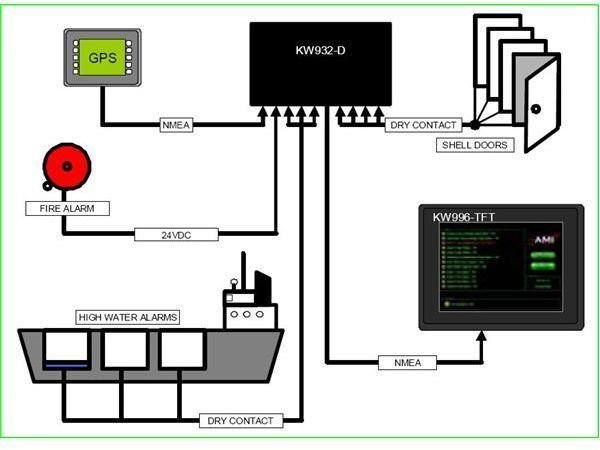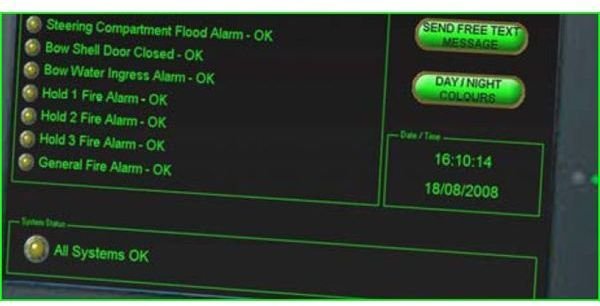Alarm email notification using SEAS system on board ships
Introduction
Till a couple of decades ago, shipping was a much neglected field. People were just happy if they got the required cargo. There was no system to monitor the safe working conditions and safe living atmosphere in ships. People who worked on ships underwent many accidents and health problems. It was only after major incidents like Exxon Valdez, Erika that the attitude towards shipping underwent a sea change. Such incidents led to the development and deployment of sophisticated equipments and safety devices on ships. Every company started to aim for safer shipping and cleaner oceans. For a begining this caused lot of inconveniences to the crew who worked onboard, forcing them to upgrade with the fast changing technology. Even though these sudden technological changes are considered as burden, the fact is these were designed for the safety of the people working onboard. One such equipment which is creating a revolution in shipping is the “SEAS.” Let us discuss what “SEAS” is all about and how does alarm email notification help a ship.
SEAS
It is the acronym for “Ship E-mail Alarm System.” It is the most recent development in shipping technology which involves electronic circuit interaction with the satellite communication systems. It is designed only for the safety of the vessel irrespective of whether at port or at sea. This system is foolproof and totally reliable for safety upkeep of the vessel.
Causes of marine accidents
It is basically an alarm monitoring system combined with the satellite communication systems. This system was adopted as several accidents happened onboard due to human negligence. Statistics shows that almost 80% of the accidents happening onboard are due to the human negligence. Thus the system eradicates human negligence and makes it possible for a person to supervise and direct the ship’s crew to take corrective action when something goes wrong. It can be compared with the writer-editor analogy. A writer often commits mistakes when writing an article. The mistakes may not be identified by the writer, but the editor has a keen eye for them. So even though the ship’s crew do not have any clue of what is happening in a particular situation, a third person can easily identify the mistake and ensure corrective action is taken by them. Thus the probability of major accidents is converted into incidents and near misses.
Working of the SEAS

The electronic unit in the SEAS is connected to the shipboard alarm system and to the GPS. Also the electronic unit has the facility to feed in correct values of any system process. When the data is fed into the electronic unit, it compares the stored value with the observed value. If there is a change between the observed and stored value, then it activates the shipboard alarm system.
Along with activation of the alarm, it also sends instant e-mail to pre-designated e-mail address, for a person who is at shore. The e-mail has a standard format clearly stating the observed value of the system, actual set value and the change as a graph plotted against time.
Thus a person ashore, usually superintendent, gets this instant e-mail and he immediately enquires about the situation onboard. If the crew onboard does not take any action for any abnormality that has happened, then the superintendent can question and direct the crew to take corrective action and thus prevent further problems which arise due to human negligence. There is also free messaging option from the same display unit and control system so that the crew, after taking corrective action, can respond to the designated e-mail address.
The Status Conditioning Unit is designed to form an interface up to 12 separate inputs which can be grouped under as follows:
- Main Fire alarm systems
- Engine Room Fire alarm system
- Cargo Hold bilge level
- Engine room bilge level
- Water tight door status
- Fire door status
- Cargo tanks status
- Security Alert system
- Steering gear failure alarm
- Generator alarms and other machinery alarms
- Oil Pollution/overflow/spill onboard alarm
- Man overboard alarm.
The alarm monitoring and control system has some essential connection requirements. All input signals are of the on/off format or binary “0” or “1” format. The system must be connected to the shipboard GPS, so that for each and every alarm, the vessels position is mailed and recorded automatically. The unit communicates with the nearest satellite or via internet depending upon the availability and frequency. Thus these systems are really worth for shipboard purpose to ensure safety is predominant.
Image From Website Of:
AMI Marine (UK) Ltd
